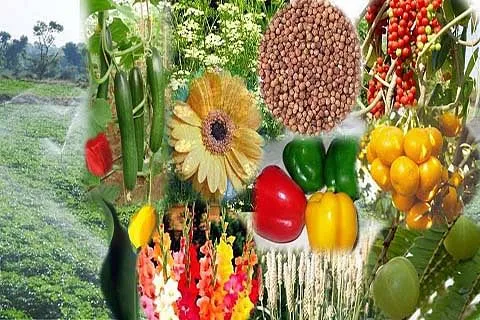Srinagar, Dec 31: Amid COVID induced economic meltdown across globe, the Kashmir’s horticulture continues to be a silver lining for the local economy as the sector generates Rs 10,000 crore revenue annually.
With the government’s focus on doubling farmers’ income, Kashmir’s horticulture sector is also reaping benefits. The UT administration has introduced several initiatives aimed to alleviate the status of farmers by making farming economically viable.
One such initiative is to bring land under high-density plantations. As per the horticulture department, over 1107 kanals of horticulture have come under the Hi-density plantation in Kashmir. At the same time, the CA storage capacity in the Valley has witnessed an increase of 30,000 MTs.
While giving out the details of the work the horticulture department has done in the year 2021, Director General Horticulture, Aijaz Ahmad Bhat said that to enhance production and productivity of the farming community modified high-density plantation scheme and nursery scheme for high-density plantation were launched.
“A first of its kind two-day Apple Festival was successfully organised by the department at SKICC on the banks of the Dal Lake to promote Kashmiri produce among buyers from different states. Two new pesticides laboratories at Baramulla and Kulgam and one soil testing laboratory at Pulwama are being established.”
He said that 134 vermicompost units and 156 packhouses were established during the year.
“CA Storage Capacity increased from 1.70 LMT to 2.00 LMT during the year. Three new CA Stores were approved by SLEC and forwarded to the government of India for sanction. 15 new Nurseries are being established in private sector including04 Walnut Nurseries and 3 HiTech nurseries.”
DG Horticulture said that 1837 samples were analyzed, and Soil Health Cards (SHC) were distributed during 2021.
“ Last year we have propagated 12 lakh high-density rootstock. 211 new irrigation sources created including deep bore wells, shallow wells, etc. 30809 were farmers trained by the department during the year.”
He said that t a proposal for establishing two new Centres of Excellence (CoEs) has been approved by SLEC and sent to the government of India for Sanction. “30,000 fruit plants of Lemon, Orange, walnut and Hazelnut Distributed among the farmers of Karnah, Uri, and Gurez. Two new Food Processing Units have been sanctioned.”
Jammu and Kashmir’s Horticulture is silently showing progress as the annual income generated by the fruit industry has crossed over Rs 10,000 crore.
Horticulture is the major sector that plays a key role in the economy of Union Territory. “It generates approximately Rs 10,000 crore annually income. Contributes 8 percent to Gross State Domestic Product (GSDP),” reads an official document accessed by Greater Kashmir.
As per the government figures, 7.5 lakh families/35 lakh population are involved in this sector. It is the main employment generation sector (each hectare of orchard generates 400 man-days per year of employment.)
“Emerging /growing sector having ample opportunities for agro-industries/employment. An area of 3.33 lakh hectares (2020-21) is under fruit cultivation. A production of 20.35 lakh MTs (2020-21) has been recorded,” it reads.
In India, total apple production is approximately about 28 lakh MTs and of which 20 lakh MTs are produced from J&K.
The Rs 8,000 cr worth market of apples is changing the lives of 30 lakh people connected with the sector, he added.
According to the official figures, the area under cultivation of fruits in Jammu and Kashmir increased from 2.21 lakh hectares in 2001 to 3.33 lakh hectares thus registering an increase of 1.22 lakh hectares in two decades.







